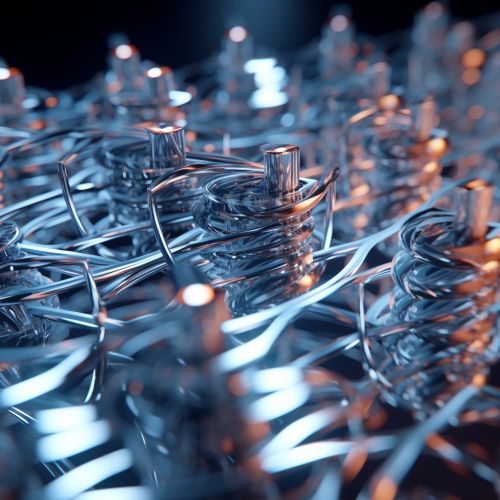The Mathematics of Topological Insulators
Introduction
Topological insulators are a unique phase of matter that have garnered significant attention in the field of condensed matter physics. They are materials that behave as insulators in their interior but whose surface contains conducting states, meaning that electrons can only move along the surface of the material. The mathematical description of topological insulators involves the use of advanced concepts from quantum mechanics, topology, and solid state physics.


Quantum Mechanics and Topology
Quantum mechanics and topology both play crucial roles in the understanding of topological insulators. Quantum mechanics provides the framework for describing the microscopic behavior of particles in these materials, while topology provides a way to classify and understand their macroscopic properties.
Quantum Mechanics
Quantum mechanics is the branch of physics that deals with the behavior of particles at the atomic and subatomic level. It introduces the concept of a wave function, which describes the state of a quantum system. In the context of topological insulators, the wave function is used to describe the state of electrons in the material.
The behavior of electrons in a topological insulator is governed by the Schrödinger equation, a fundamental equation in quantum mechanics. The solutions to this equation give the possible energy states of the electrons. In a topological insulator, these states form bands of energies, known as energy bands.
Topology
Topology is a branch of mathematics that deals with the properties of space that are preserved under continuous transformations. In the context of topological insulators, it is used to classify the different phases of matter based on their topological properties.
The key concept in the topology of topological insulators is the topological invariant. This is a quantity that remains unchanged under continuous transformations of the system. For topological insulators, the topological invariant is related to the number of surface states that exist on the surface of the material.
Solid State Physics
Solid state physics is the branch of physics that deals with the properties of solid materials. It provides the framework for understanding the behavior of electrons in a solid, which is crucial for understanding topological insulators.
In solid state physics, the behavior of electrons is described by the band theory. This theory describes how electrons move in a solid and how they occupy energy bands. In a topological insulator, the band theory is modified to include the effects of topology, leading to the concept of a topological band theory.
Mathematical Description of Topological Insulators
The mathematical description of topological insulators involves the use of several advanced mathematical concepts, including Hilbert space, Hamiltonian operators, and Berry phase.
Hilbert Space
In quantum mechanics, the state of a system is described by a wave function, which is a vector in a Hilbert space. A Hilbert space is a vector space equipped with an inner product, which allows for the calculation of lengths and angles. In the context of topological insulators, the Hilbert space is used to describe the state of the electrons in the material.
Hamiltonian Operators
The behavior of a quantum system is governed by its Hamiltonian, which is an operator that corresponds to the total energy of the system. The Hamiltonian of a topological insulator includes terms that describe the kinetic energy of the electrons, their potential energy due to the presence of other electrons and ions in the material, and their spin-orbit interaction.
Berry Phase
The Berry phase is a phase acquired by a quantum system when it is adiabatically transported around a closed path in its parameter space. In the context of topological insulators, the Berry phase is related to the topological invariant of the system. It provides a way to calculate the topological invariant and to predict the existence of surface states.
Conclusion
Topological insulators are a fascinating and complex phase of matter. Their mathematical description involves the use of advanced concepts from quantum mechanics, topology, and solid state physics. Understanding these concepts is crucial for understanding the unique properties of topological insulators and for predicting their behavior in various applications.
